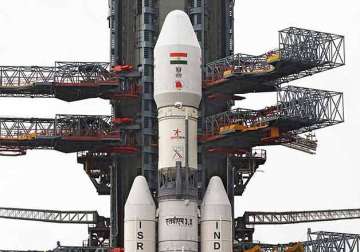Bengaluru: In the heaviest ever commercial mission undertaken by ISRO and its commercial arm Antrix, the country's workhorse the Polar Satellite Launch Vehicle (PSLV) will put in orbit five foreign satellites from the spaceport of Sriharikota in Andhra Pradesh on July 10.
With the overall lift-off mass of the five satellites amounting to about 1,440 kg, this mission becomes the heaviest commercial mission ever undertaken by Antrix/ISRO, the Indian space agency said.
In its 13th flight, PSLV-C28 will launch three identical DMC3 optical earth observation satellites built by Surrey Satellite Technology Limited (SSTL), United Kingdom (UK).
The three DMC3 satellites, each weighing 447 kg, will be launched into a 647 km Sun-Synchronous Orbit (SSO) using the high-end version of PSLV (PSLV-XL), ISRO said on its website. PSLV-C28 will be the ninth flight of PSLV in ‘XL' configuration.
In addition, the rocket will also carry two auxiliary satellites from UK - CBNT-1, a technology demonstrator earth observation micro satellite built by SSTL, and De-OrbitSail, a technology demonstrator nano satellite built by Surrey Space Centre, it said.
Accommodating the three DMC3 satellites each with a height of about 3 metre within the existing payload fairing of PSLV, was a challenge, ISRO said.
To mount these satellites onto the launcher, a circular Launcher adaptor called L-adaptor and a triangular deck called Multiple Satellite Adapter-Version 2 (MSA-V2), were newly designed and realised by ISRO for this specific purpose.
These international customer satellites are being launched as part of the arrangement entered into between DMC International Imaging (DMCii), a wholly owned subsidiary of SSTL, UK; and Antrix Corporation Limited (Antrix), it said.
The DMC3 constellation, comprising three advanced mini-satellites DMC3-1, DMC3-2 and DMC3-3, is designed to address the need for simultaneous high spatial resolution and high temporal resolution optical Earth Observation.
Launched into a single Low-Earth Orbit plane and phased with a separation of 120 degrees between them, these satellites can image any target on the Earth's surface every day. Major application areas include surveying the resources on earth and its environment, managing urban infrastructure and monitoring of disasters.
CBNT-1, weighing 91 kg, is an optical Earth Observation technology demonstration micro satellite built by SSTL.
The 7 kg De-orbitSail from Surrey Space Centre, is an experimental nano satellite for demonstration of large thin membrane sail and drag deorbiting using this sail.
Latest India News
